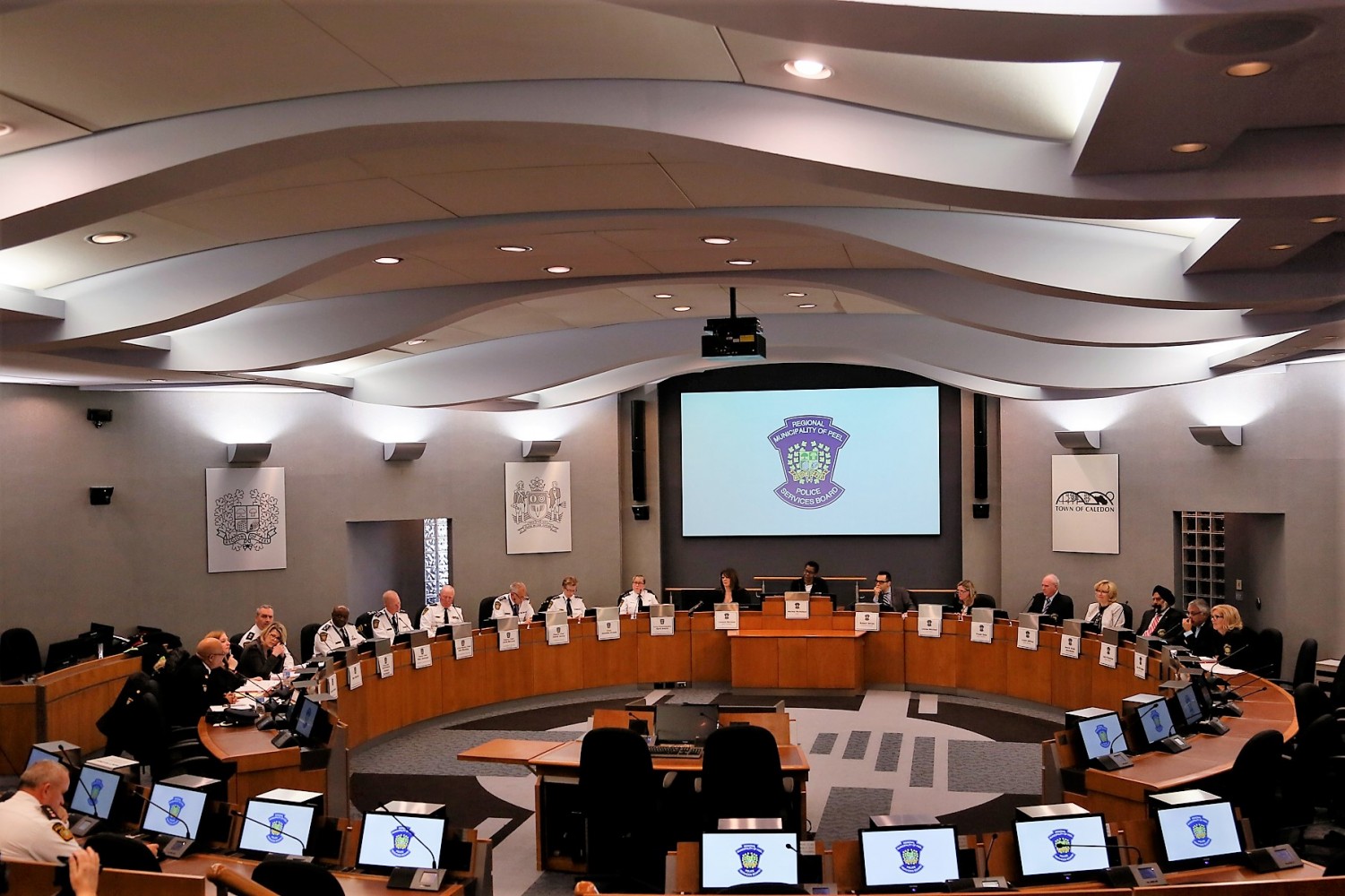
Decision on new police chief won’t come until the fall
The search for a new chief to lead the Peel Regional Police will extend through the summer, with a final decision not expected until later this year.
According to the Peel Police Services Board’s executive director, corporate recruitment firm, Odgers Berndtson, has been conducting a Canada-wide search for a new chief.
“(They) have coordinated a community and stakeholder consultation process, released a job ad, and received applications,” Robert Serpe said in an email. “The process will continue through the summer and the board expects to announce a new full-time Chief of Police later this year.”
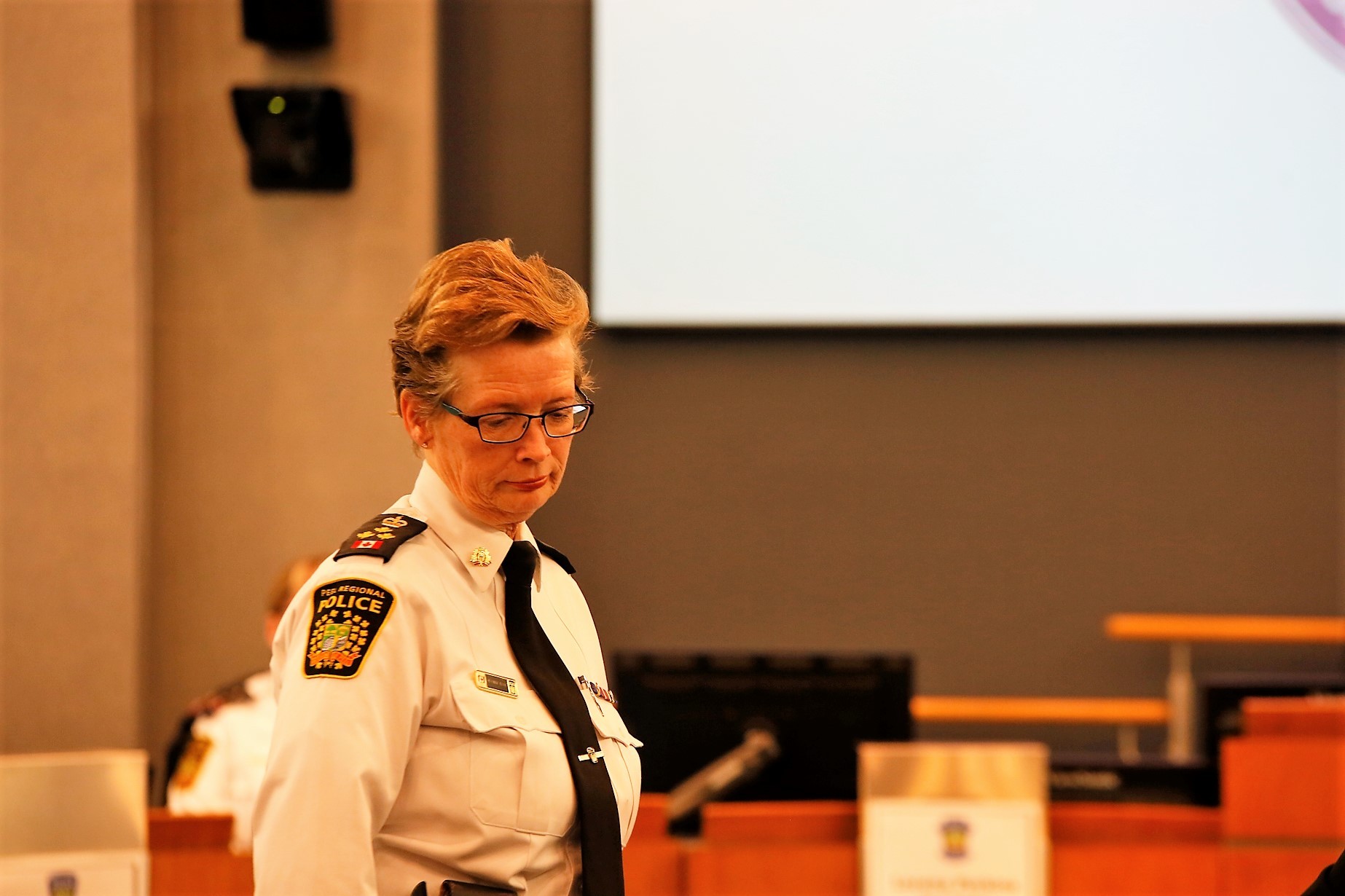
Former police chief Jennifer Evans
The search was triggered by the resignation of former chief Jennifer Evans, who made a sudden announcement in the fall and stepped down in January. Evans served with Peel police for 35 years, six of them as chief.
Chris McCord is currently acting as the interim chief.
Evans faced a number of controversies throughout her leadership of the force, including her steadfast support of carding, the controversial police practice of random street checks that data has shown to disproportionately impact Black residents in Peel.
Evans refused a 2015 police board request led by Mississauga Mayor Bonnie Crombie and Brampton Mayor Linda Jeffrey to suspend the practice of carding after data showed her force had targeted Black individuals in the controversial stops at three times the rate of white residents. Evans and the board continued to butt heads over issues such as the force’s lack of visible minority officers and the board’s request to audit the force to find out if it was properly addressing diversity issues.
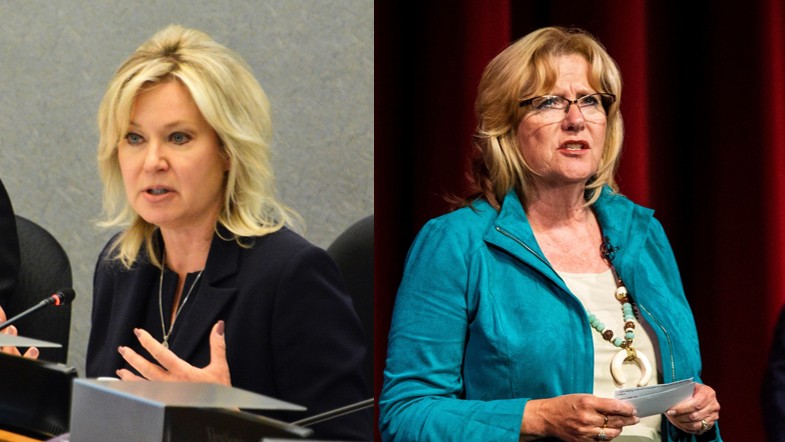
Mississauga Mayor Bonnie Crombie and former Brampton mayor Linda Jeffrey challenged the former chief
A $21 million lawsuit was filed against Evans and the police board in 2016 alleging the former chief had interfered in a police shooting probe, after a young woman was struck by a stray bullet. One of the officers involved was the daughter of Evans’ closest friend on the force. The victim accused Evans of visiting her in the hospital and promising a career in policing prior to formal interviews by the Special Investigations Unit, which investigates harm done to members of the public involving police. The statement of defence included an admission that Evans visited the victim in the hospital hours after the shooting but denied any offer of assistance with a career in policing, which the young woman was pursuing.
In another case, weeks before Evans’ sudden resignation announcement, Jeffrey and Crombie, along with the rest of the board, approved an external investigation by the province’s police watchdog into possible misconduct by the former chief over her role in the botched investigation of murdered members of a Mississauga family, including two who were Black. The Harrison family has questioned if race was a factor. The Office of the Independent Police Review Director is still investigating Evans.
She again came under fire shortly before announcing her resignation when claiming last summer that the recent rise in violent crime was partly due to new rules in Ontario that dramatically curtail carding. Critics questioned how Evans came to her unsubstantiated conclusion and pointed out that the new rules in no way prevent police officers from carrying out any investigative work or preventative action when suspicious activity takes place.
While Evans has stepped aside, Peel police are still staring down a tumultuous future with rising rates of violent crime and trying to grasp the challenge that comes with policing a growing and diversifying city.
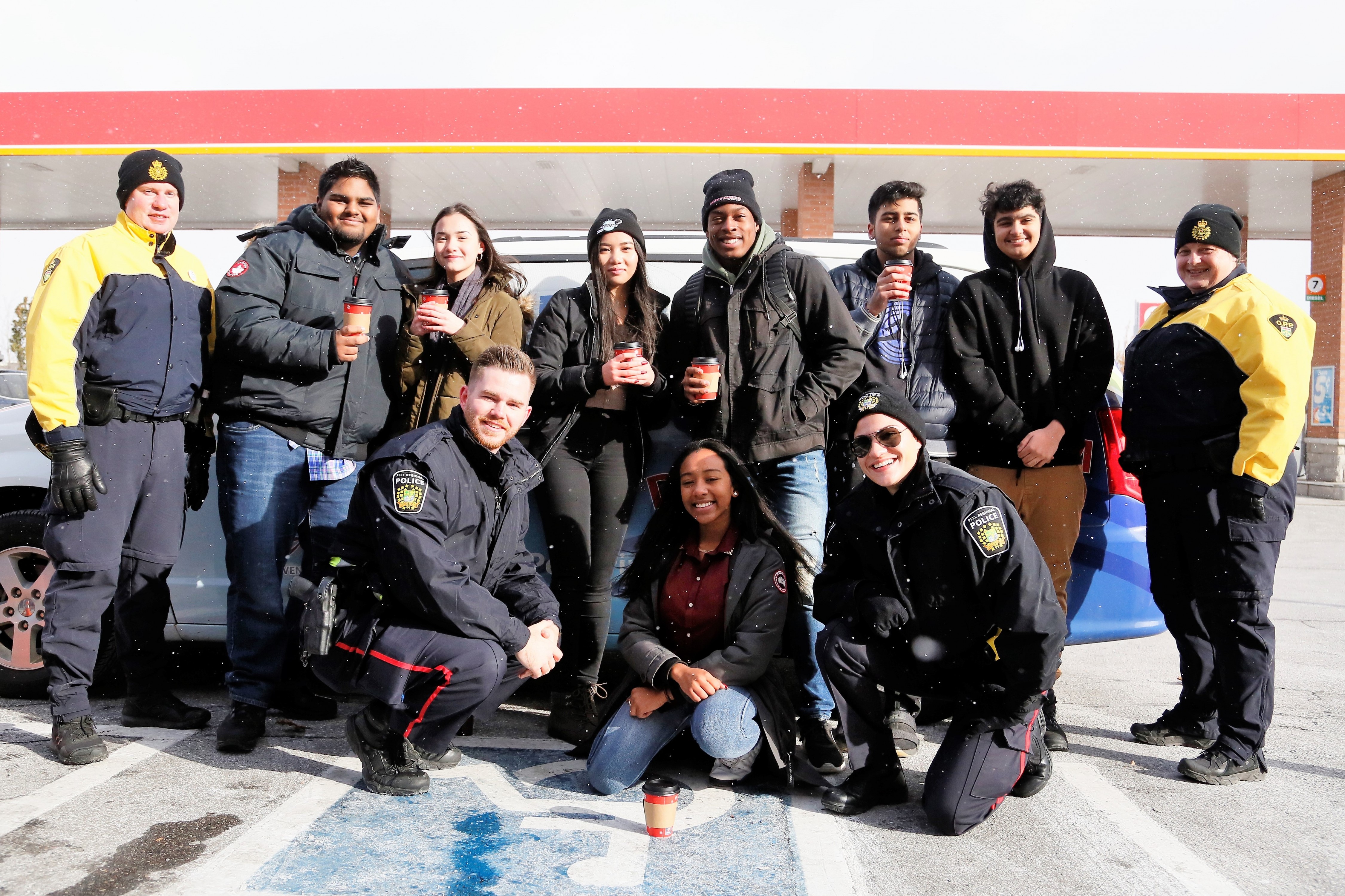
Peel police officers work with youth across the region
The new chief will be starting the job following one of the most violent years Peel has seen in recent memory.
In 2018, Peel experienced across-the-board increases in violent types of crime. The 26 homicides last year marked a 63 percent increase over 2017; attempted murders increased by 86 percent; assaults by 14 percent; sexual violations by 13 percent, and a catch-all category of “other violent violations” jumped 25 percent. In Brampton and Mississauga, there were 242 stabbings, a 55 percent increase over the year before; 53 shootings, a 33 percent increase; and police investigated more than 500 reports of gunshots fired, an 18 percent increase.
These violent offences were only a small portion of the hefty workload borne by Peel police last year. The force dealt with a total of about 43,000 Criminal Code offences, more than 9,000 of which were crimes against persons (an average of 26 per day), and more than 28,000 crimes against property (an average of 77 per day). The force also doled out about 232 Highway Traffic Act charges on a daily basis.
To deal with the increasing workload, the new chief will be responsible for managing an approximately $424 million budget, as well as hiring additional officers. This year saw the addition of 45 uniformed officers to the country’s third largest municipal police force, as well as 10 others designated to specialty divisions throughout the service.
The additional officers would bring Peel Region closer to the provincial average for the number of police officers per capita. Previous to the additional officers, Peel had about 138 officers per 100,000 residents, while the provincial average is 183 per 100,000 and the national average hovers around 188.
The issues falling to the new chief also exist inside the walls of police headquarters, with a recently completed equity audit by the Canadian Centre for Diversity and Inclusion (CCDI) highlighting systemic discrimination throughout the organization and a significant disconnect between senior leadership and frontline officers. As well, the audit affirmed the claims that community advocates have been making for years, that they have a long way to go when it comes to representing the community they serve.
According to 2017 data from the force, 20 percent of uniform staff were racialized (425, out of a total uniform complement of 2080), while PRP’s jurisdiction, Brampton and Mississauga, is 65 percent visible minority or aboriginal. Non-uniform staff are slightly more representative of the community.
Numbers for 2018 show that 60 percent of new uniform hires in 2018 are classified as racialized persons.
According to the CCDI audit, 93 percent of police leaders present at the time of the study believed the force was committed to diversity and inclusion and that it exhibited fairness, consistency and flexibility.
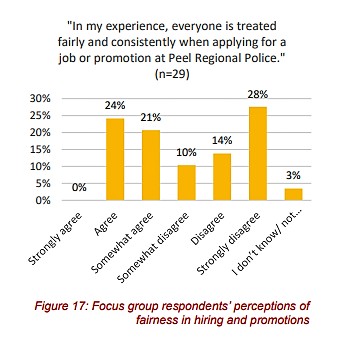
Results of the recent equity-diversity audit of Peel police by the CCDI
“In contrast, only 41 percent of focus group respondents had a positive response to this question,” the report says, with straight, white, able-bodied men being the most likely to agree. “None of the Racialized or Newcomer respondents responded positively.”
The CCDI report places most of the blame for these issues on senior leadership, with a majority of employees describing the organization as “change-averse” and “elitist.” The report says almost three-quarters of police leaders and members of the board “do not seem to recognize that barriers exist or [believe they] rarely exist for certain groups at Peel Regional Police.”
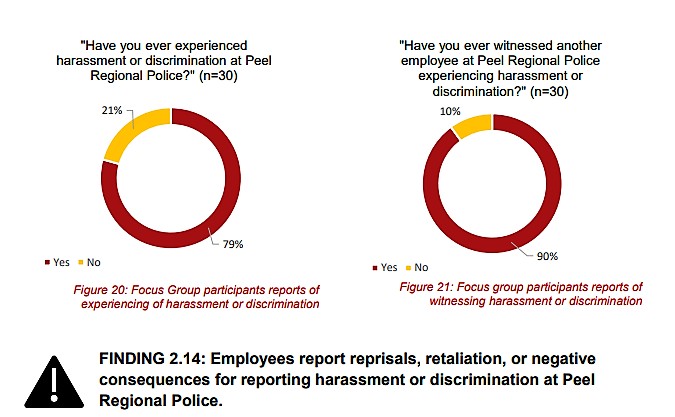
About a third of the PRP leaders in place in 2017-18 “indicated their belief that these systemic oppressions do not exist within PRP,” while others suggested they believe “these oppressions manifest only as individual acts of meanness.” These leaders, the report says, don’t make “the connection that these oppressions are systemic in our society and therefore are also in our organizations.”
However, when rank-and-file employees were asked if “everyone benefits from equal access to resources and opportunities” within the PRP, only half of the more than 1,800 who filled out a survey offered a positive answer. According to Michael Bach, the founder and CEO of the CCDI, an industry benchmark for such a question is 70 percent.
Email: [email protected]
Twitter: @JoeljWittnebel
Submit a correction about this story


